#Byzantine icon
Explore tagged Tumblr posts
Text
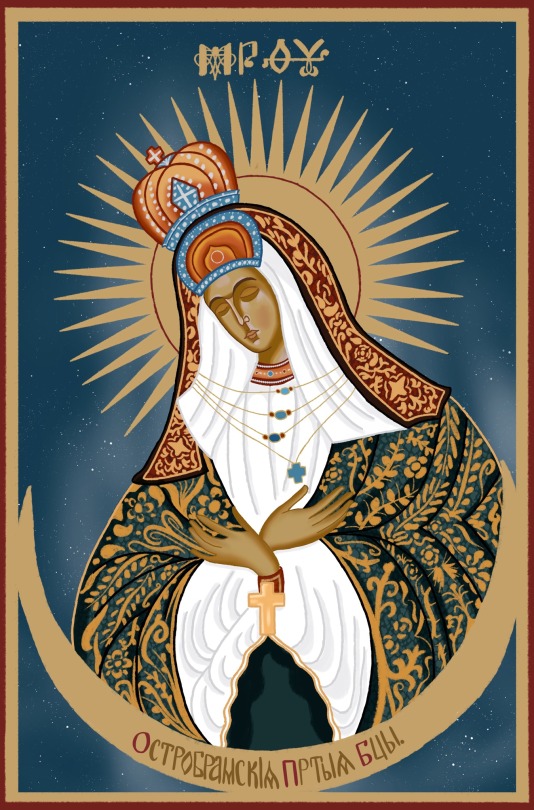
Our Lady of the Gate of Dawn Gate (Version 2)
This is a revision on my original take of this icon which I posted. I thought it needed more color so I decided to re-do all the color from scratch, and I much prefer this version. It is a gorgeous icon housed in a church in Lithuania. May the Theotokos intercede for us all!
#byzantine#byzantine icon#catholic#christian#icon#iconography#madonna#mary#orthodox#our lady#panagia#roman catholic#theotokos#virgin mary#christian iconography#Eastern Orthodox#ostrobramska#gate of dawn#dawn gate#eastern catholic#theotokos icon#Russian orthodox#Russian orthodox icon#orthodoxy#orthodox christian#christianity#most holy Theotokos save us#holy theotokos#orthodox iconography#orthodox icon
66 notes
·
View notes
Text
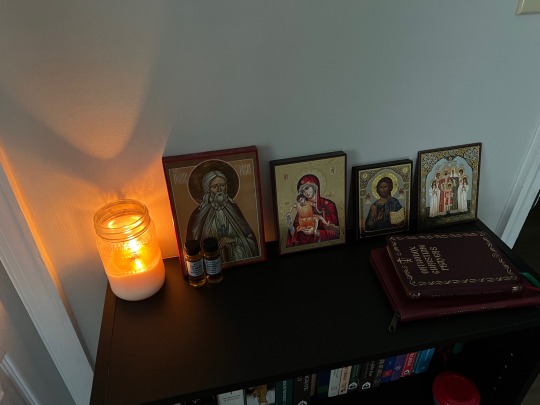
icon corner ☦︎
#russian orthodox#orthodox#eastern orthodox#greek orthodox#orthodoxy#christian icon#orthodox icon#byzantine icon#icon corner
33 notes
·
View notes
Text
Common historical misconceptions:
Suits and ties were not used by everyone: they were mostly used by people of high status on formal occassions.
Daft Punk represent some of the earliest androids registered outside fiction, they were not two humans in suits (this is still disputed)
Similarily, Miku Hatsune was an "anime" character at first, the first sentient personalities of Miku date from 2026.
The "Old City" of Niork in Usamerica was actually built in the 2230s around the JFK Spaceport, the ruins of old Niork are in the Manhattan Swamplands.
Similarily, the Statue of Liberty and the Empire State Building are later reconstructions. The original Statue of Liberty did not have the shield with the emblem of the Joint Chiefs.
The Joint Chiefs did not refer to an alliance of "chiefs" in charge of Usamerican "states", but rather to the pre-socialist military dictatorship.
Bioengineering allowing for animal features is only registered from the late 21th century onwards. Findings previous to that are understood to be caricatures.
"Anime" art was made for general entertaiment, thus the stylization: it did not reflect a lack of knowledge of anatomy. The 'animation renaissance' of the 22th century is heavily disputed.
Open surgery was not 'primitive' or 'painful': it was a complex procedure with anaesthesia and other processes to avoid suffering of the patient. Widespread internal biotechnology arrived only on the 22th century.
The First Space Race did not end because of 'incuriosity' or 'astrophobia'. While political factors were important, technological developements such as Single-Stage-to-Orbit spaceships came only by the late 21th century.
While it is true that live meat was commonly consumed in the industrial era, it was not hunted or butchered at home by individuals such as Gauchos, but rather produced by ranching. Widespread artificial meat arrived only in the 22th century.
The current Socialist Interstellar is not a direct continuation of the original Socialist International, there were several interludes on which did not exist as such, particularily the Neoliberal Interlude of 1991 to 2089. The oldest continously socialist country is Cuba, now part of the URSAL.
There is no evidence that Batman existed. His introduction to the superhero genre as a 'powerless' hero was fictional, and not based on a real person, despite several claims.
However, Espaiderman is identified to be a real person: Pedro Parques, who lived in Baries, Argentina during the late 21th century, but he did exist as a Usamerican character previously.
#the anime thing is supposed to be a reference to byzantine icons: they look simplistic to us because they were heavily stylized#to byzantines they would have looked masterful because they were done in the right style. there are many other such cases.#cosas mias#and yes. the current capitalist period is just a brief interlude#and yes. some of these are wrong on purpose.
773 notes
·
View notes
Text
this deserves a bonus story

once upon a time, when i was at the ripe age of (i think..?) nine, my mother asked me if i maybe wished to pursue more art studies since i had graduated some kind of elementary art school by then
i agreed
and so at some point after that i walked into a class that seemed a bit... unusual; i couldn't put my finger on why exactly it felt off to me
it became apparent when the actual classes started; neither my mom, nor me knew that was a class of PAINTING EASTERN ORTHODOX ICONS, BYZANTINE SCHOOL OF ART AND ALL, IT NEVER WAS ADVERTISED LIKE THAT
all that said: i could never guess i would actually need the experience i absorbed during my only visit there, but there you go
@gallierhouse i've got you <3
#art is a coping mechanism#byzantine style#iwtv armand#iwtv#iwtv art#armand amadeo arun#armand amadeo andrei#interview with the vampire#iwtv fanart#amc iwtv#the vampire armand#i never knew i needed this#i never knew Assad's face works THIS well as a Byzantian icon#vampire armand
256 notes
·
View notes
Text
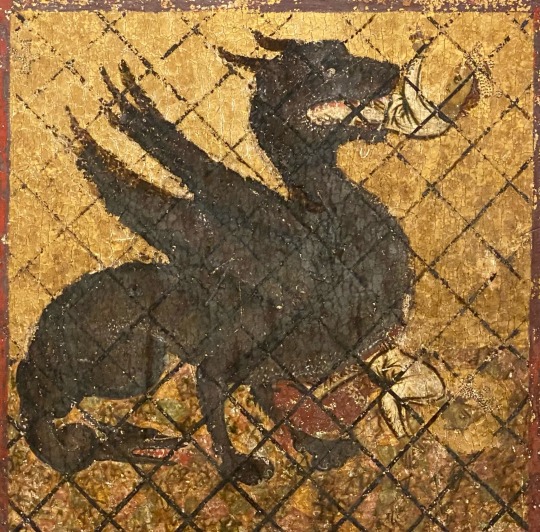
Dragon
In this panel, Saint Margaret is being swallowed by a dragon and then miraculously bursting out of its stomach. This story led to Margaret becoming the patron saint of childbirth
by Margarito d'Arezzo
#found#art#london#byzantine#Byzantine art#dragons#dragon#saint Margaret#patron saint#patron saint of childbirth#Margarito d'Arezzo#Tuscan art#Tuscany#religious art#christian art#icons
292 notes
·
View notes
Photo

Icon of the Virgin Portaitissa at the Holy Monastery of Iveron on Mount Athos, Byzantine provenance, made before 9th century
39 notes
·
View notes
Text

Source
69 notes
·
View notes
Text
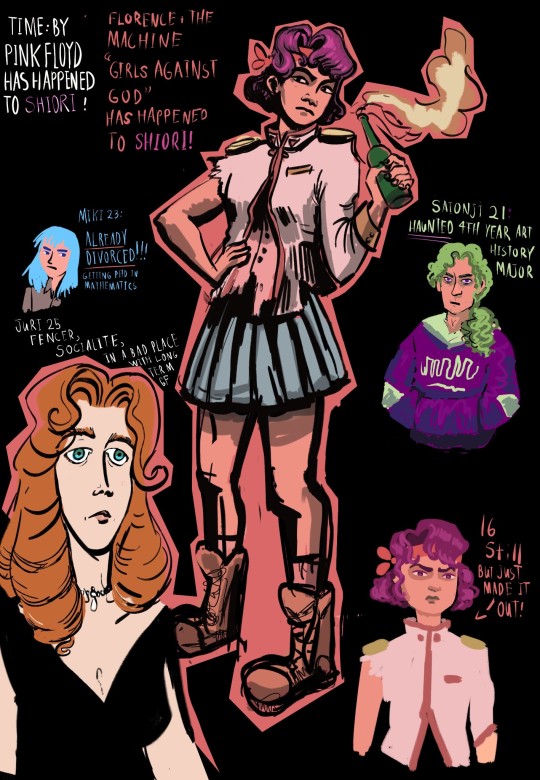
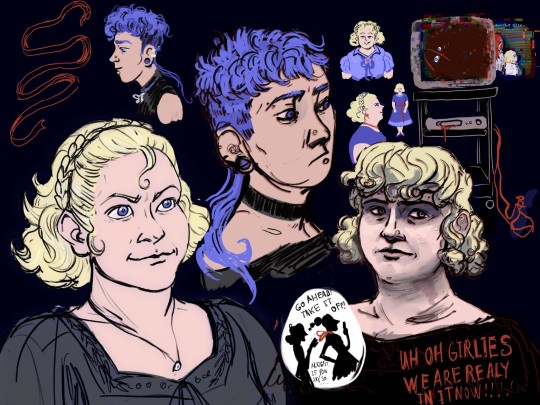
20 years later RGU
#rgu#nanami is the oldest at 33 cause she got out of there right after Anthy#others mostly left at the end of the next year wich was 10 years irl oops#anyway this series of post series head canons headcannons have spiraled into a Byzantine narative existing only in my head#nanami being the center of everything of course#ive got a little fancomic worked out and thumbnails for an amv where shiori comits a bunch of arson in a mostly abandoned ohttori#dont know how far ill get with any of that tho#anyway Nanami is a girlmom in this wich is troublesome cause she herself was not raised#she also flew bush planes in her 20's#thats kozue at the bottom shes 23 cause she got out same time as miki and juri#dj's and does events set up#shes the only one who's in frequent contact with nanami#was a very hard decision to change her hairstyle cause it was iconic in canon but im happy with the results#speaking of hair Miki grew his hair out in subconscious emulation of utena who he doesnt remeber but its not an accident that he's looking#more like mikage#who he also doesnt remember#the shadow play is a velvet ribbon refference#cw implied abuse#ask to tag#my art#post-canon
55 notes
·
View notes
Text
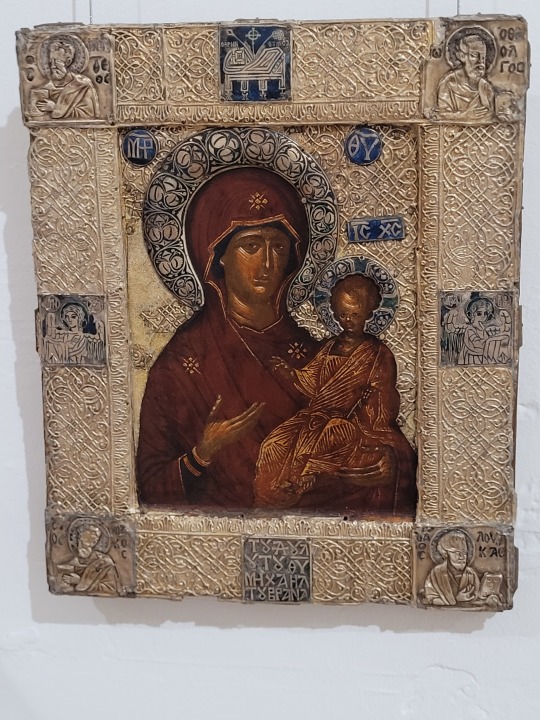
Byzantine icon of the Madonna (Theotokos) and Child, of the type known as Hodegetria (Our Lady of the Way): Mary gestures toward the infant Christ, who in turn raises his hand in a sign of blessing. The type originated in a now lost icon from the Monastery of the Panagia Hodegetria in Constantinople that was said to have been painted by St. Luke. This example, by an unknown artist, dates to the 14th century and is in the MUZA, Valletta, Malta.
#art#art history#Middle Ages#medieval#medieval art#Byzantine#Byzantine Empire#Byzantine art#icon#iconography#religious art#Christian art#Christianity#Orthodox Christianity#Eastern Orthodox#Madonna and Child#Theotokos#Hodegetria#14th century art#MUZA
197 notes
·
View notes
Text
12 notes
·
View notes
Text
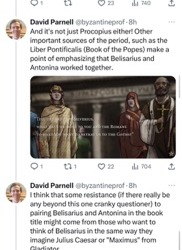
David Parnell effortlessly dropping truth bombs on the most obnoxious Belisarius fanboys
#I will never for the life of me understand why Belisarius is such an icon for redpilled losers#he’s like a magnet for the worst Great Man History enjoyers with the most insane ideologies#I cannot imagine being an actual Byzantine historian and needing to deal with these people on a regular basis#queue#belisarius
29 notes
·
View notes
Text
Saint Tsar Nicholas II

One of my favorite Russian saints
Troparion (Tone 1)
Most noble and sublime was your life and death, O Sovereigns;
Wise Nicholas and blest Alexandra, we praise you,
Acclaiming your piety, meekness, faith, and humility,
Whereby ye attained to crowns of glory in Christ our God,
With your five renowned and godly children of blessed fame.
O passion–bearers decked in purple, intercede for us.
Kontakion (Tone 2)
Royalty and martyrdom were joined together, O blessed ones,
In your death for righteousness and right belief, O wise Sovereigns,
Nicholas and Alexandra, with your five children.
Hence, Christ our God counted you worthy of thrones in Heaven;
And with twofold crowns of glory,
You reign forever, adorned with grace divine.
#eastern orthodox#orthodox#byzantine#orthodoxy#christianity#icon#iconography#byzantine icon#christian iconography#Russian icon#Russian orthodox#Russian tsar#tsar Nicholas#Saint Tsar Nicholas#Romanov#Romanov family#imperial russia#Russian saint#Russian Orthodox icon#Russian orthodox iconography#Eastern Orthodox saint#Eastern Orthodox icon#iconographer#chrsitian iconography#Russian iconography#Russian orthodoxy#orthodox icon#orthodox iconography#russia#Russian
20 notes
·
View notes
Text
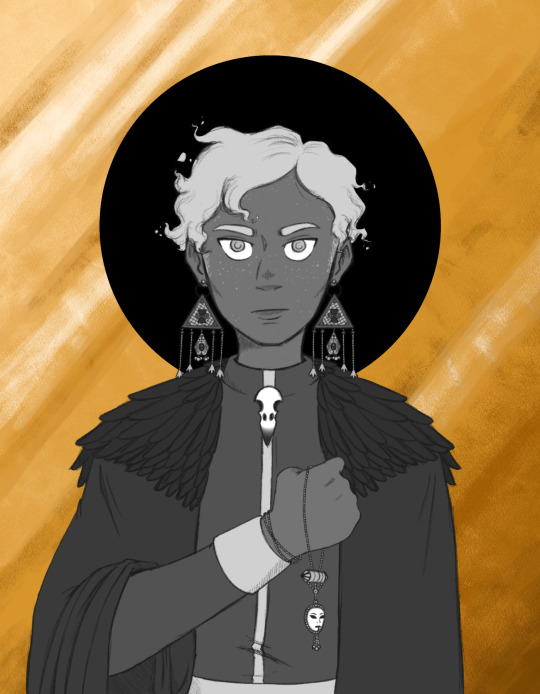
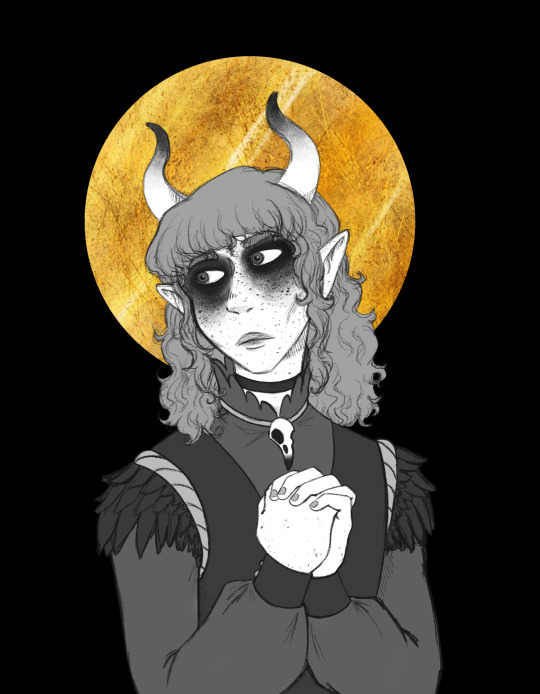
Look forward towards your own path, and let not your eyes wander unto another.
#dnd#oc#dungeons and dragons#artists on tumblr#dnd5e#tiefling#Raven Queen cleric#Warlock#oc respite#Strixhaven gang#<- gonna start using that tag for group pics#I had bigger aspirations for these pieces to make them more byzantine icon inspired but idk#They turned out more like Sunday school portraits which I'm not mad at#Considering it's them in basically their Sunday Best as kids!
24 notes
·
View notes
Photo


1887 Jean-Joseph Benjamin-Constant (French, 1845–1902), The Impress Theodora (La Emperatriz Theodora), Oil on Canvas.
#1887#painting#portrait#jean-joseph benjamin-constant#jean-joseph constant#french painter#Oriental subjects#oriental#byzantine#the impress theodora#the empress theodora#la emperatriz theodora#La Emperatriz#feminist#icon
74 notes
·
View notes
Photo



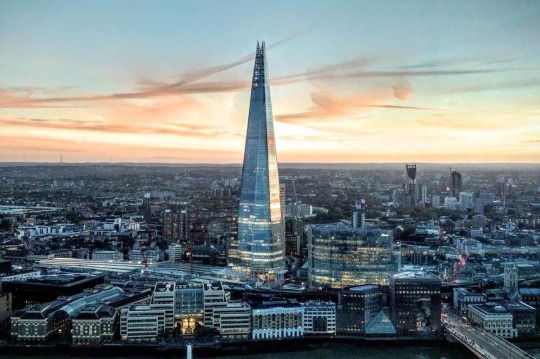



GetAgent !
#art#design#architecture#surreal#ai#artificial intelligence#render#iconic#sydney#london#midjourney#industrial#renaissance#byzantine#rococo#effeiltower#funnyshit#funny pictures#greek#baroque#neo classical#china#paris
84 notes
·
View notes
Text

All hail! Ye infant martyr flowers, Cut off in life’s first dawning hours: As rosebuds snapt in tempest strife When Herod sought your Saviour’s life.
You, tender flock of Christ, we sing, First victims slain for Christ your King: Beneath the Altar’s heavenly ray With Martyr-palms and crowns ye play
-- Hymn, Salvete flores Martyrum
#The lament of Rachel#Byzantine art#icon painting#Saint Rachel#feast of the holy innocents#free palestine#religious art#orthodox christianity
26 notes
·
View notes